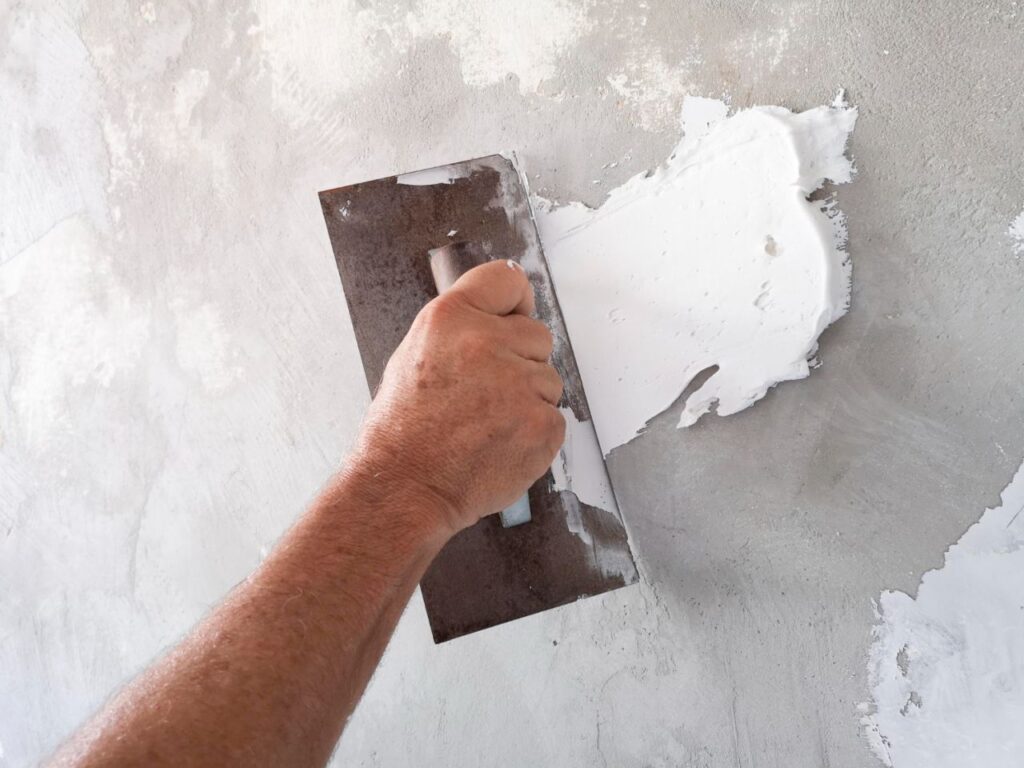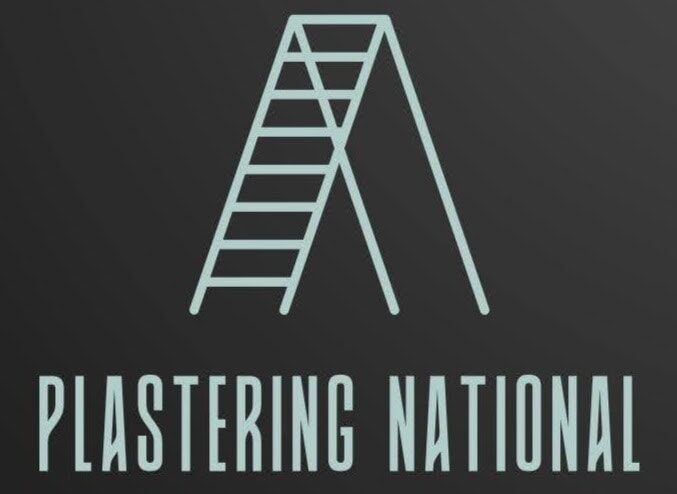Plastering, a fundamental technique in the construction industry, involves the application of a mixture of materials, typically lime or cement, sand, and water, over surfaces such as walls, ceilings, or partitions. This process aims to provide a smooth, seamless finish, concealing the underlying brickwork, concrete, or other materials and plays several crucial roles in construction. The primary functions of plastering include enhancing the durability of structures by acting as a protective layer against external forces like weathering, impact, and temperature changes, thereby contributing to the longevity of the construction. Additionally, plastering creates a plain, even surface ideal for painting and other decorative treatments, ensuring a visually appealing finish. It also protects against atmospheric elements and moisture penetration, which can lead to mildew growth and structural deterioration. Furthermore, plastering improves the aesthetic appeal of interiors and exteriors, transforming rough surfaces into polished ones ready for further beautification.
The Skills And Knowledge Required For Plastering
Plastering is a skilled trade that demands technical proficiency, practical knowledge, and soft skills. This craft is essential in the construction and renovation of buildings, requiring a detailed understanding of materials and techniques to ensure durable and aesthetically pleasing finishes. Drawing insights from various authoritative sources, we delve into the comprehensive skill set and knowledge base necessary for mastering the plastering profession.
Technical Proficiency And Practical Skills
A plasterer’s technical abilities are the foundation of their craft, encompassing a range of competencies from preparation to application:
- Mixing Techniques: Proficiency in preparing plaster mixtures with the correct consistency is crucial. This involves understanding lime, cement, sand, and water ratios.
- Surface Preparation: Effective plastering begins with preparing the base surface, which may include cleaning, smoothing, or applying a bonding agent to ensure the plaster adheres appropriately.
- Application Methods: Skilled plasterers are adept at applying plaster in even layers, mastering techniques for both flat surfaces and intricate designs. This includes working with tools like trowels, hawks, and floats to achieve the desired finish.
Knowledge Of Materials
Understanding the properties and applications of various plastering materials is essential for any plasterer:
- Types of Plaster: Knowledge of different plasters, including gypsum, cement-based, and lime plasters, and their appropriate use cases is vital.
- Specialised Plasters: Familiarity with moisture-resistant, fireproof, and decorative plasters allows plasterers to tackle a wide range of projects confidently.
Soft Skills
The effectiveness of a plasterer is not only measured by their technical skills but also by their interpersonal and cognitive abilities:
- Attention to Detail: Precision is vital in plastering. A keen eye for detail ensures high-quality finishes and customer satisfaction.
- Physical Stamina and Dexterity: Plastering is physically demanding, requiring good hand-eye coordination, strength, and endurance to handle long hours of manual work.
- Communication and Customer Service: Clear communication with clients, architects, and construction teams is essential for understanding project requirements and delivering results that meet or exceed expectations.
Professional Development
- Education and Training: Many plasterers start their careers through apprenticeships, combining on-the-job training with classroom instruction. Vocational courses also offer pathways into the profession.
- Continuous Learning: The construction industry is ever-evolving, with new materials and methods emerging. Successful plasterers commit to lifelong learning to stay ahead of industry trends.
Career Progression Opportunities
With experience, plasterers can explore various advancement paths, including:
- Specialisation: Expertise in decorative plastering, restoration work, or dry lining can open up niche markets.
- Supervisory Roles: Experienced plasterers may progress to supervisory or management positions, overseeing projects and teams.
- Entrepreneurship: Many plasterers eventually start businesses, leveraging their skills to offer specialised services or general plastering solutions.
The Art And Science Behind Plastering
Plastering, an age-old craft, elegantly combines the precision of science with the fluidity of art, transforming ordinary surfaces into masterpieces of architectural beauty. This intricate process, which has evolved through centuries across various cultures, involves the application of plaster to walls, ceilings, and other surfaces, yielding finishes that are not only aesthetically pleasing but also structurally reinforcing. The journey of plastering from its ancient origins to modern techniques underscores its significance in both historical preservation and contemporary design.
A Historical Perspective
The roots of plastering stretch back to ancient civilisations, where natural materials like mud, clay, and lime were first used to coat and protect structures. This foundational practice was refined by the Egyptians, Greeks, and Romans, who introduced lime and sand mixtures, laying the groundwork for the plastering techniques we recognise today. The Renaissance marked a significant period of innovation, with plaster becoming a medium for decorative expression in Europe’s grandest edifices.
The Science Of Plastering
At its core, plastering is a science that demands a deep understanding of materials and their properties. Modern plastering incorporates various materials, including traditional lime, contemporary gypsum, and durable cement-based plasters, each selected based on the specific requirements of the project at hand. These materials are meticulously mixed to achieve the desired consistency, applied with precision, and finished to perfection, ensuring the longevity and durability of the surface.
The Artistry In Plastering
Beyond its functional role, plastering is an art form that offers limitless possibilities for creative expression. Techniques such as polished (Venetian) plastering and textured finishes allow plasterers to imbue spaces with character and elegance. The skilful application of plaster can mimic the appearance of natural stone, create intricate patterns, or produce smooth canvases ready for further artistic endeavours.
The Plasterer’s Craft
Mastering the craft of plastering requires a blend of technical skill, artistic vision, and physical dexterity. A proficient plasterer is adept at preparing surfaces, mixing materials to the correct specifications, and applying plaster to achieve both strength and beauty. This expertise extends to crafting detailed mouldings, executing repairs, and maintaining the integrity of historical structures, making plastering a highly respected and sought-after trade.
Transforming Spaces
Plastering can transform architectural spaces, influencing the ambience and feel of interiors. Plasterers can enhance the spatial quality of rooms by strategically using texture, colour, and finish, making them feel more inviting, elegant, or vibrant. In restoration projects, skilled plastering is essential for preserving the authenticity and charm of historic buildings, bridging the past with the present.
FAQs About Plastering
What Is Plastering?
Plastering is a construction technique involving the application of a mixture of materials like lime, cement, sand, and water onto surfaces to create a smooth and seamless finish.
Is Plastering Considered A Profession?
Yes, plastering is indeed a profession. Achieving desired results requires a blend of technical skills, artistic vision, and practical knowledge.
What Skills Are Required To Become A Professional Plasterer?
Professional plasterers need technical proficiency in mixing techniques, surface preparation, and application methods. Soft skills like attention to detail, physical stamina, and effective communication are also crucial.
How Can One Enter The Plastering Profession?
Entry into the plastering profession can be through formal education, apprenticeships, or on-the-job training. Many professionals start as apprentices under experienced plasterers to gain practical experience.
What Are The Career Prospects In Plastering?
Plastering offers a wide range of career prospects, from working on residential projects to large commercial constructions. Experienced plasterers can advance to supervisory roles, manage their businesses, or specialise in niche areas such as decorative plastering or historic restoration.
Plastering As A Profession
The Role Of A Plasterer
A plasterer’s primary responsibility is to apply plaster to walls and ceilings, creating a smooth or decorative finish as the foundation for further decorating. This role extends beyond mere application; it involves mixing ingredients to make plaster, repairing damaged walls and ceilings, and applying renders and finishes to provide protective or decorative layers. The work environment for plasterers can be physically demanding, often requiring long periods on their feet, working at heights, and dealing with dust and debris. Despite these challenges, the profession offers immense satisfaction through the tangible results of one’s labour.
Pathways To Becoming A Plasterer
Entering the plastering profession can be achieved through various routes, including formal education, apprenticeships, and on-the-job training. While formal qualifications like a certificate in wall and ceiling lining or solid plastering can be beneficial, many employers prioritise enthusiasm, willingness to learn, and the ability to follow instructions. Apprenticeships offer a blend of on-the-job experience and classroom learning, making them popular for aspiring plasterers. Additionally, some regions may require plasterers to hold a Construction Skills Certification Scheme (CSCS) card to work on construction sites.
Skills And Attributes For Success
Successful plasterers possess technical skills, physical stamina, and soft skills. These include:
- Technical Proficiency: Knowledge of different plastering techniques and materials, ability to prepare surfaces, mix materials to the correct specifications, and apply plaster to achieve the desired finish.
- Physical Stamina: Plastering is labour-intensive, requiring good physical condition to handle the job’s demands.
- Attention to Detail: Achieving a flawless finish necessitates a keen eye for detail and precision.
- Communication: Effective communication with clients, architects, and construction teams is crucial for understanding project requirements and delivering satisfactory results.
- Career Prospects and Advancement
- Plastering offers a range of career prospects, from working on residential projects to large commercial constructions. Experienced plasterers may progress to supervisory roles, manage their businesses, or specialise in niche areas such as decorative plastering or historic restoration. The profession provides a stable income and the opportunity for continuous learning and mastery of new techniques.
Challenges Facing The Plastering Profession
While essential in the construction and renovation of buildings, the plastering profession faces several challenges that can impact the quality of work and the sustainability of businesses within this trade. These challenges range from navigating a saturated market and client acquisition to dealing with specific plastering problems and the intricacies of executing plastering projects in the UK.
Navigating Market Competition And Client Acquisition
One of the primary hurdles for plasterers is distinguishing their services in a crowded marketplace. With numerous professionals offering similar services, standing out requires exceptional plastering skills and strategic marketing and branding efforts. The digital age demands a robust online presence, leveraging social media, maintaining a solid website, and optimising for local search to attract and retain clients. Additionally, the ongoing quest for skilled labour presents a significant challenge, as finding artisans who share a dedication to quality is increasingly difficult.
Common Plastering Problems
Plastering projects can encounter various issues, from aging to neglect or unforeseen damages. Common problems include cracked plaster, which can range from benign hairline cracks to more severe delaminating cracks indicating plaster pulling away from its lath. Settlement cracks resulting from structural sagging pose another serious concern that requires immediate attention to prevent further damage. Discoloured plaster often signals water damage, necessitating prompt action to address the underlying leak and prevent extensive damage.
Overcoming Challenges In Plastering Projects
Professionals in the UK dealing with plastering projects must prepare surfaces meticulously, ensuring they are clean, dry, and debris-free before applying plaster. Achieving a smooth and even finish requires precise application techniques and the right tools. Dealing with dampness and moisture involves preventive measures such as applying a damp-proof membrane and using moisture-resistant plaster. Avoiding common mistakes like over-mixing plaster, applying it too thickly or thinly, and over-trowelling or sanding is crucial for a successful outcome.
Strategies For Success
To overcome these challenges, plasterers must adopt a multifaceted approach. Emphasising unique selling points, showcasing expertise through digital marketing, and engaging with clients through social media can enhance visibility and attract business. Addressing plastering issues requires a deep understanding of materials and techniques and a proactive approach to maintenance and repair. Continuous learning and adaptation to new methods and materials can also help plasterers stay ahead in a competitive market.
Conclusion
Plastering is a crucial construction technique that involves applying a mixture of materials, typically lime or cement, sand, and water, over surfaces to create a smooth, seamless finish. It enhances the durability of structures by acting as a protective layer against external forces, creating a plain, even surface ideal for painting and decorative treatments, and providing protection against atmospheric elements and moisture penetration. Plastering techniques cater to various needs, environmental conditions, and aesthetic preferences.
Plastering requires technical proficiency, practical knowledge, and soft skills. Technical abilities include mixing techniques, surface preparation, application methods, knowledge of materials, and specialised plasters. Soft skills include attention to detail, physical stamina and agility, and communication and customer service.
Professional development opportunities include education and training through apprenticeships, continuous learning, and career progression opportunities such as specialisation, supervisory roles, and entrepreneurship. The art and science behind plastering combine the precision of science with the fluidity of art, transforming ordinary surfaces into masterpieces of architectural beauty. The roots of plastering can be traced back to ancient civilisations, where natural materials like mud, clay, and lime were first used to coat and protect structures. The Renaissance marked a significant period of innovation, with plaster becoming a medium for decorative expression in Europe’s grandest edifices.
Plastering is a science that involves understanding materials and their properties, using materials like lime, gypsum, and cement-based plasters for specific project requirements. This art form offers limitless possibilities for creative expression, with techniques like polished plastering and textured finishes. Mastering the craft of plastering requires a blend of technical skill, artistic vision, and physical dexterity.
Plastering can transform architectural spaces by influencing the ambience and feel of interiors through the strategic use of texture, colour, and finish. The profession offers immense satisfaction through the tangible results of one’s labour.
Entry into the plastering profession can be achieved through formal education, apprenticeships, and on-the-job training. Successful plasterers possess technical skills, physical stamina, attention to detail, and effective communication. Career prospects range from residential projects to large commercial constructions, with experienced plasterers progressing to supervisory roles, managing their businesses, or specialising in niche areas like decorative plastering or historic restoration.
Challenges facing the plastering profession include navigating a saturated market, client acquisition, and dealing with common plastering problems. Navigating market competition requires strategic marketing and branding efforts, while the ongoing quest for skilled labour presents a significant challenge. Common plastering problems include cracked plaster, settlement cracks, and discoloured plaster.
To overcome these challenges, plasterers must adopt a multifaceted approach, emphasising unique selling points, showcasing expertise through digital marketing, and engaging with clients through social media. Addressing plastering issues requires a deep understanding of materials and techniques, a proactive approach to maintenance and repair, and continuous learning and adaptation to new methods and materials.
Content Summary
- Plastering is a vital construction technique involving lime, cement, sand, and water for a smooth finish.
- It bolsters structural durability, protecting against external forces and moisture.
- Various plastering methods suit different needs, environments, and aesthetic tastes.
- Technical prowess, practical knowledge, and soft skills are essential for plastering.
- Technical skills include mixing techniques, surface prep, and material knowledge.
- Attention to detail, physical agility, and communication are crucial soft skills.
- Professional growth includes apprenticeships, continuous learning, and career advancement.
- Plastering combines scientific precision with artistic fluidity, transforming surfaces.
- Ancient civilisations used mud, clay, and lime for plastering, marking its roots.
- The Renaissance era saw plastering evolve into decorative expression in Europe.
- Plastering is a science and art, utilising materials like lime, gypsum, and cement.
- Techniques like polished plastering offer endless creative possibilities.
- Mastering plastering requires technical skill, artistic flair, and physical agility.
- Plastering alters architectural spaces, influencing ambience through texture and colour.
- Satisfaction in plastering comes from tangible results and transformed spaces.
- Entry into plastering can be via education, apprenticeships, or on-the-job training.
- Successful plasterers blend technical skills, stamina, attention to detail, and communication.
- Career paths vary from residential to commercial projects and supervisory roles.
- Experienced plasterers may manage businesses or specialise in decorative or historic work.
- Challenges in plastering include market saturation, client acquisition, and joint issues.
- Navigating market competition demands strategic marketing and branding.
- The search for skilled labour is an ongoing challenge in the plastering field.
- Common plastering problems include cracks, settlement issues, and discolouration.
- Plasterers combat challenges through unique selling points and digital marketing.
- Engaging with clients through social media aids in overcoming market challenges.
- Addressing plastering issues requires material knowledge and proactive maintenance.
- Continuous learning and adaptation to new methods are crucial in plastering.
- Plasterers must stay updated with evolving techniques and materials.
- Embracing innovation ensures competitiveness and quality in plastering work.
- Quality craftsmanship is essential for plasterers to thrive in the industry.
- Building a reputable brand helps plasterers stand out in a crowded market.
- Networking and forming partnerships can expand opportunities for plasterers.
- Offering specialised services can attract niche markets and higher-paying clients.
- Collaboration with other tradespeople can enhance project outcomes.
- Plasterers contribute to the preservation of architectural heritage through restoration work.
- Passion for craftsmanship drives plasterers to excel in their fields.
- Adhering to industry standards and regulations ensures professionalism and safety.
- Maintaining a positive reputation is crucial for sustaining a plastering business.
- Providing excellent customer service fosters repeat business and referrals.
- Attention to detail distinguishes exceptional plastering work from mediocre results.
- Investing in high-quality materials and tools is essential for long-lasting plastering projects.
- Time management skills are crucial for meeting project deadlines and client expectations.
- Plasterers must adapt to various project requirements and client preferences.
- Collaborating with architects and designers can lead to innovative plastering solutions.
- Continuous improvement through feedback and reflection enhances plastering skills.
- Environmental sustainability should be considered in plastering practices.
- Proper waste management and eco-friendly materials contribute to a greener industry.
- Plasterers play a vital role in shaping the visual appeal of architectural spaces.
- Upholding professional integrity builds trust with clients and stakeholders.
- The future of plastering relies on embracing technology, sustainability, and innovation.



